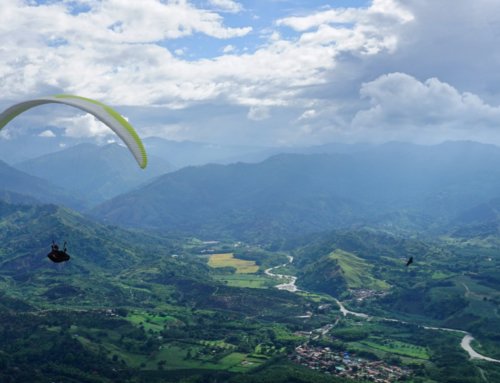Time to think about repacking your reserve
If you only take one thing away from this article (as well as seasonal best wishes from Aerofix) please let it be a new year resolution to get your reserve repacked. So why it that so important?
It’s a tough life for a reserve. Getting squashed, sat on, perhaps on damp ground, hardly ever given an airing – and ideally never used in earnest. All the things I have mentioned before about caring for glider fabric apply here, but particularly we should try to avoid damp, sand, and contaminants such as oil and petrol. These factors can result in premature ageing, or also delay the opening by what may be critically important fractions of a second.
All reserves have a finite life, and the general guidance is 10 years. I will return to this issue in a subsequent article.
If we get a reserve in for repacking, we hang it overnight to make sure it’s thoroughly dry. A close inspection of the fabric and lines makes sure there’s no mildew or contamination. And we keep the packing table and surrounding area really clean to ensure nothing abrasive is packed back into the reserve.
Alternatives to using a professional repacker include doing it yourself or going along to your local club repack. Aerofix supports Derbyshire Soaring Club’s repacking events, as we think it’s more important that pilots get what could be their last lifeline properly checked at least once a year in this way if they choose, rather than focus solely on our own business. Since we repack reserves pretty much every day, we aim to bring that experience to bear helping fellow pilots through what may feel a very unfamiliar annual exercise.
It’s also worth making sure your pre-flight routine includes a check of the pins. I was on Bradwell earlier this year when there was an involuntary deployment just after take off which could have been avoided with this simple check. And the other thing for us to think about is intentional deployment: in particular, am I confident I could I reach the handle and pull it if I was in an autorotation pulling several g and feeling very disoriented?
We often get asked about the different types of reserves and their individual merits. I’ve jotted down the main highlights of each type in the table below for information. The conventional round design with a pulled down apex (PDA) has been joined by square or square round designs, and of course the steerable Rogallo has been available for some time.
| Type | Characteristics and benefits |
| Conventional PDA | Typically weigh around 2.5kg and slightly bulkier than the other types, but cost effective. |
| Lightweight PDA | Close to 1.5kg and less bulky. |
| Square | Usually of lightweight or ultra lightweight construction, perhaps down to just over 1kg. More rapid opening and less prone to pendulum movement than PDA. Steerable squares are currently being developed. |
| Rogallo | The advantages of a square, and steerable once the main wing has been pulled in and time allows. Premium pricing and more complex to repack. |
| Cut-away system | Allows the pilot to separate from the paraglider to avoid potential downplaning after deployment, and maximise the opportunity to benefit from a steerable reserve. |
Fitting O rings
Our reserves are stowed away for fairly long periods between inspections, during which time our harnesses get thrown around. So it’s always possible that the bridles may move around the maillon if they weren’t restrained in some way. That’s not something we’d want, since on deployment we want them in the right place to take best advantage of the maillon’s greatest strength from end to end.
We quite often see bridles without anything to hold them still on the maillon. Others arrive with castration rings, which aren’t entirely effective.
The maillons we most often see are square like the one in these pictures. But they also come in oval (to join two rope type bridles) or triangular (for one flat bridle and one rope type – the ideal shape for the bridles in this picture). When we supply the reserve we always fit the most appropriate maillons. But with properly fitted O rings, square maillons can be used pretty much universally.
The recommended approach is to use a large sized O ring which is easily fitted:
- Put the O ring on the maillon first.
- Make a second loop around the maillon. [IMG_8699.jpg]
- Put the bridle onto the maillon. [IMG_8700.jpg]
- Loop the O ring over the bridle and onto the maillon on the other side. [IMG_8702.jpg]
- Lift the O ring off the maillon, give it a twist [IMG_8704.jpg] and then replace onto the maillon. [IMG_8705.jpg]
- It should now look like this! [IMG_8707.jpg]
This looping of an O ring is the same as is used on the riser maillons, so it’s something worth knowing.
If you want to chat anything through, we’re always happy to offer help and advice over the phone (01433 627195) or by email (info@aerofix.com).

